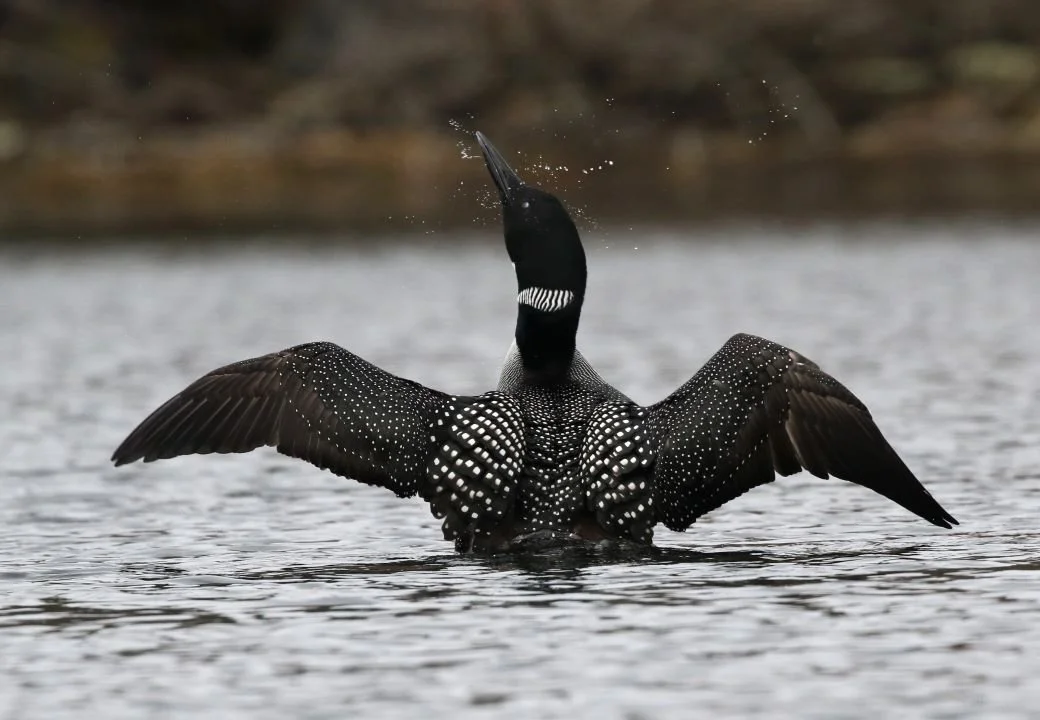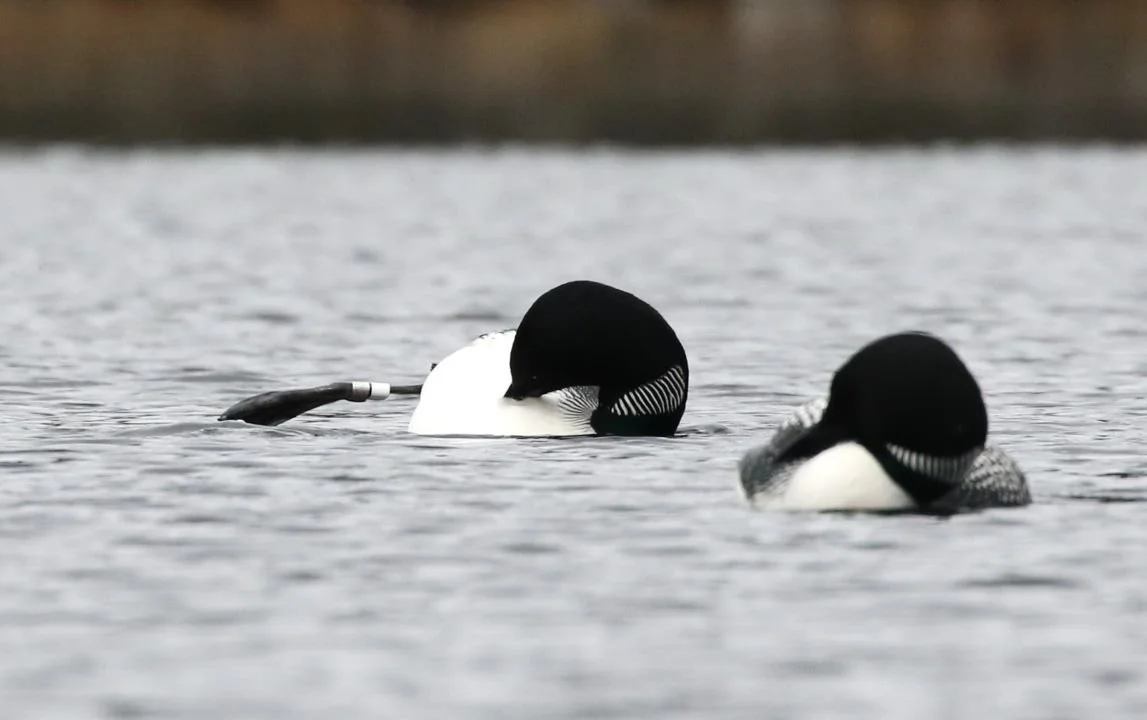"Loon Pond", NY: 27 Years and Counting
Loon Pond iced out around April 12 this year. I visited on April 14, hoping to see if the banded loon pair had returned. As I eased my canoe into the cold water, I was full of hopeful anticipation. Would they both be back? Would one of them not return, and be replaced by a new, unbanded loon? The Loon Pond male was banded in 2019, his first year on the pond when he displaced a male who had only been on the pond for a year. If he returned in 2024, this would make him at least ten years old this year since loons usually don’t breed until they are mature at the age of five and strong enough to obtain and hold a territory against intruding loons.
The female would be one of the oldest surviving loons in our study, which began in 1998. She was banded as a breeding adult on Loon Pond in 2002. If she returned to the pond this year, she would be at least 27 years old. She has been the territorial female on Loon Pond every year since she was banded, and who knows how long before that. She has fought off numerous rival females and reared many chicks during her tenure on Loon Pond. This female is special to me, because she was the first banded loon I ever saw, spotting her bands while doing the Annual Loon Census over a dozen years ago. My communications about her and my subsequent frequent trips to Loon Pond to observe her and her mate and chicks led to my becoming a loon monitor with the ACLC.
There, a flash of white moving at the far west end of the pond! Could it be a loon? Scanning through binoculars, I was disappointed to observe two male common mergansers instead. I paddled down toward the west end, and suddenly noticed a big bird surface, followed by another. A pair of loons! Yay! Now, who were they?
I approached slowly and quietly, hoping to glimpse leg bands with binoculars so I could determine the loons’ identities. One loon started to preen, rolling on his side with his right leg in the air. Instantly I could see the white and silver bands on his leg, identifying him as the returning Loon Pond male. Switching my attention to the other loon, which I hoped was the old, banded female, I watched hopefully. And watched. And watched. She just wouldn’t put a leg in the air and floated fairly low in the water. Both of these were characteristics of the old female, always a tough loon to see bands on for those reasons. I eased in closer in hopes of getting a glimpse of a band through the water, but no luck.
Both loons started to dive and fish again, and it is extremely difficult to see bands when they are fishing. Waiting until they surface to preen for awhile or maybe scratch an itch with their leg is the best way to spot bands. I followed from a distance as the loon pair fished, and after twenty minutes they rested on the surface, swimming slowly east. I paddled closer and looked hard for bands in the water. Finally, I caught a flash of orange on the right side of the female. Hurray! The old, banded female has an orange band with a black stripe plus a metal band on her right leg. In a few minutes I spotted a flash of blue and green on her left leg in the water, and the old female has a blue band over a green band on her left leg. It was the old gal, back from the ocean for another breeding season on Loon Pond.
Whenever I see this female return to Loon Pond, I feel a great sense of relief and well-being. If a loon can migrate to the ocean, live there for five to six months, and return to a small Adirondack pond twenty-two or more times in a row, then the earth still has hope. Think of all the challenges she meets every year: human development, climate change, severe storms, black fly infestations, pollution, and challenges from other loons. And yet here she is, back for another summer to nest and hopefully raise and fledge two more amazing loons to share our incredible planet.
E. George, ACLC Field Staff & Naturalist




